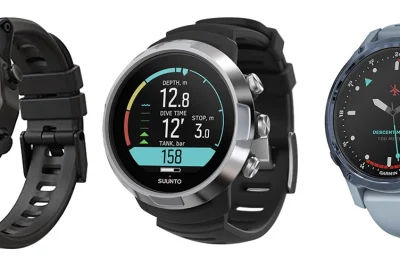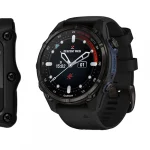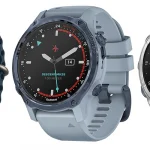Understanding the Impact of Clear Interfaces on Dive Safety

Table of Contents
- Understanding the Impact of Clear Interfaces on Dive Safety
- Top Features Every Dive Computer Should Have
- Common Mistakes Divers Make Without a Clear Interface
- Debunking Myths About Dive Computer Interfaces
- The Psychological Benefits of Trustworthy Dive Equipment
- Navigating Technology: Choosing Your First Dive Computer
- Predicting the Future of Dive Computer Technology
- Comparing Popular Dive Computers of 2023
Introduction
In today’s diving world, the right equipment can transform a scuba diver’s experience, offering not only safety but also confidence and clarity. Dive computers are central to this transformation, particularly when equipped with clear and intuitive interfaces. This post delves into how these advancements bring peace of mind to nervous divers, exploring key benefits and trends across the industry.
Understanding the Impact of Clear Interfaces on Dive Safety
Top Features Every Dive Computer Should Have
Modern dive computers are essential tools for divers, enhancing safety and dive management through advanced technology. Understanding must-have features is crucial for making an informed purchasing decision.
- Decompression Calculation: Computes ascent speed limits, mandatory safety stops, and remaining bottom time based on various factors such as depth and dive duration. The Predictive Multi-Gas (PMG) algorithm ensures accuracy during gas switches.
- Depth and Ascent Rate Monitoring: Real-time monitoring alerts divers if ascent exceeds safe rates, recording maximum depth for post-dive analysis.
- Air Integration: Allows monitoring of tank pressure, aiding in calculating remaining bottom time.
- Multi-Gas Compatibility: Enables switching between air, nitrox, and trimix, enhancing safety during complex dives.
- Rechargeable Batteries: USB-rechargeable batteries last for over 20 dives per charge, providing low-battery warnings.
- Digital Dive Compass: A built-in digital compass eliminates the need for standalone models, aiding navigation.
- Vibrational and Audible Alarms: Alerts divers to depth and time limit violations without auditory disruptions underwater.
- Data Logging and Connectivity: Allows connectivity with apps for easy syncing and sharing of dive profiles.
- Adaptive Algorithms: Adjust calculations based on factors like heart rate, offering nuanced understanding during strenuous dives.
These features not only enhance safety but also improve the overall diving experience, allowing divers to explore underwater confidently.
Top Features Every Dive Computer Should Have
Divers often encounter challenges with dive computers that feature unclear interfaces, leading to critical errors that compromise safety. Here are some common mistakes caused by unclear interface designs:
- Failing to Turn On the Device: Confusing button sequences can lead to forgetting to activate the computer, invalidating decompression data.
- Failing to Adjust Altitude Settings: Unclear indication of altitude settings can lead to incorrect pressure calculations.
- Ignoring Alarms: Unclear alerts may be misunderstood, risking conditions like tissue over-saturation.
- Misunderstanding Decompression Models: An unfriendly interface may cause selection of inappropriate models.
- Skipping Dive Logs: A complex logging process may deter effective documentation, complicating tracking of exposure histories.
- Getting Trapped in Menus: Poorly designed interfaces lead to wasted time navigating submenus.
To reduce these mistakes, divers should consider the following preventative measures:
- Simplify Setup: Familiarise yourself with the device on land, focusing on critical functions.
- Cross-Check Decompression Models: Ensure the algorithm matches your diving preferences.
- Carry Backup Tools: Have a secondary device as backup in case of failures.
Utilising educational resources like specific training courses can also enhance abilities to navigate devices effectively and safely.
Common Mistakes Divers Make Without a Clear Interface
When purchasing a dive computer, misconceptions about interfaces can lead to confusion and anxiety. Addressing these myths is critical for informed choices.
Entry-Level Interfaces Lack Critical Safety Features
Many believe basic dive computers lack essential safety alerts; however, modern entry-level models ensure safety features are clearly displayed.
All Safety Data Is Visible on a Single Screen
Contrary to belief, many interfaces require navigation between screens for different data points, potentially leading to confusion.
Manual Data Logging Is Obsolete
While advanced models sync data, manual logging remains a critical tool for post-dive analysis.
Interfaces Automatically Track Unmeasurable Factors
Dive computers rely on depth and time inputs, not individual divers’ physiological conditions.
Audible Alerts Are Exclusive to High-End Models
All modern computers utilise sound alerts to prevent ascent and missed stops, not just high-end models.
Interface Design Guarantees Absolute Safety
Computer interfaces provide vital guidance but are not substitutes for comprehensive safety practices.
Debunking Myths About Dive Computer Interfaces
Understanding the Psychological Benefits of Trustworthy Dive Equipment
Reliable gear plays a crucial role in enhancing psychological well-being, allowing full engagement with the underwater environment.
Reduced Anxiety and Stress
The security of dependable equipment minimizes anxiety and stress, allowing divers to concentrate on relaxation.
Enhanced Confidence
Teamwork in diving often relies on equipment reliability, fostering confidence and skill mastery.
Improved Mindfulness
Reliable equipment allows divers to maintain focus, enhancing mindfulness benefits .
Stronger Social Connections
Reliable gear fosters trust among dive groups, vital for team-oriented activities.
Mental Resilience
Reliable dive gear supports mental resilience, essential for managing underwater challenges.
Dive Computers
- Diving Computers for Female Divers
- Wreck Diving Computers
- Beginner Diving Computers
- Low-Light Diving Computers
- Technical Diving Computers
- Freediving Computers
- Underwater Photography Diving Computers
- Cold-Water Diving Computers
- Travel-Friendly Diving Computers
- Multi-sport Diving Computers
- Budget-Friendly Diving Computers
- Advanced Recreational Diving Computers
- Smartwatch-Compatible Diving Computers
- Child-Friendly Diving Computers
- Military or Professional Diving Computers
The Psychological Benefits of Trustworthy Dive Equipment
Key Features to Prioritize
Choosing a dive computer with a clear interface is critical for safe diving. Here’s how to prioritize clarity in selection:
- Large, Easy-to-Read Fonts: Displays with bold, oversized text ensure readability.
- Intuitive Menu System: Simple navigation prevents the need for extensive training .
- Physical Button Design: Ergonomic buttons are essential for ease of use .
- Customisable Layout: Allows data fields to be rearranged for prioritizing critical information.
Practical Checks Before Buying
| Feature | Why It Matters |
|---|---|
| Backlighting | Ensures visibility during night dives. |
| Screen Size | Larger screens improve legibility. |
| Algorithm Transparency | Aligns with your diving style. |
Recommended Models
- Shearwater Teric: Known for its clean layout and quick data interpretation.
- Ratio iDive Color: Offers customisable interfaces for readability .
- Garmin Descent Series: Balances legibility with smartwatch functions.
Final Tips
- Test in Simulated Conditions: Practice navigation with gloves and in low light conditions.
- Avoid Over-Spec’ing: First-time divers should prioritize clarity over advanced features.
Navigating Technology: Choosing Your First Dive Computer
In 2025, dive computer technology is advancing rapidly with significant improvements in display technology, algorithms, connectivity, and sustainability. These trends enhance user experience and ensure safety and eco-friendliness.
Display Innovations
OLED color screens and segmented chip-on-glass technology improve visibility and clarity underwater.
Algorithm Enhancements
- Decompression and Gas Management: The use of advanced algorithms and AI-powered planning optimizes safety.
- Multi-gas Flexibility: Models support multiple gas mixes for technical dives .
Connectivity and Integration
Bluetooth syncing and underwater drone integration improve data transfer and environmental monitoring.
Safety Redundancy
Dual-link systems ensure continuous operation, crucial for deep dives.
Sustainability and Usability
Focus on eco-friendly materials and energy-efficient designs, enhancing safety with automated recovery planning.
Market Growth
The wrist dive computer market is projected to grow significantly due to the popularity of recreational diving.
Predicting the Future of Dive Computer Technology
Dive computers have become indispensable tools, offering features that enhance safety. Interfaces play a crucial role in providing timely information, helping divers maintain awareness. Modern computers consolidate data into an easily readable display, vital in low-visibility conditions. Air-integrated models reduce device clutter, ensuring safety and peace of mind.
Comparing Popular Dive Computers of 2023
Clear interface dive computers offer significant benefits, streamlining information and enhancing safety:
Convenience and Reduced Cognitive Load
- Centralized Information: Displays essential data on a single screen, reducing the need to juggle multiple gauges.
- Intuitive Layouts: User-friendly interfaces minimize mental effort, focusing on surroundings rather than equipment .
Enhanced Safety and Decision-Making
- Real-Time Data: Updates on depth and other parameters allow quick adjustments.
- Adaptability: Supports multi-level dives with dynamic calculations.
Accessibility for New Divers
- Simplified Learning: Intuitive dashboards ease learning of dive management.
- Streamlined Profiles: Visibility of all critical metrics enhances confidence.
These advancements make dive computers indispensable for managing risk and enjoyment, beneficial for both novices and veterans.
Sources
- Scubapro – Dive Computer Essentials: Choosing the Right One
- PADI – Dive Computers
- Scuba Diving – Dive Computers: Most Important Functions and Features
- Scuba Schools of America – Dive Computers
- Mike’s Dive Store – Beginners’ Guide to Dive Computers
- Divers Alert Network – Mastering Dive Computers: An Essential Guide
- DAN South Africa – Your Dive Computer: Tips and Tricks Part 1
- ScubaBoard – Dive Computer Advice Thread





